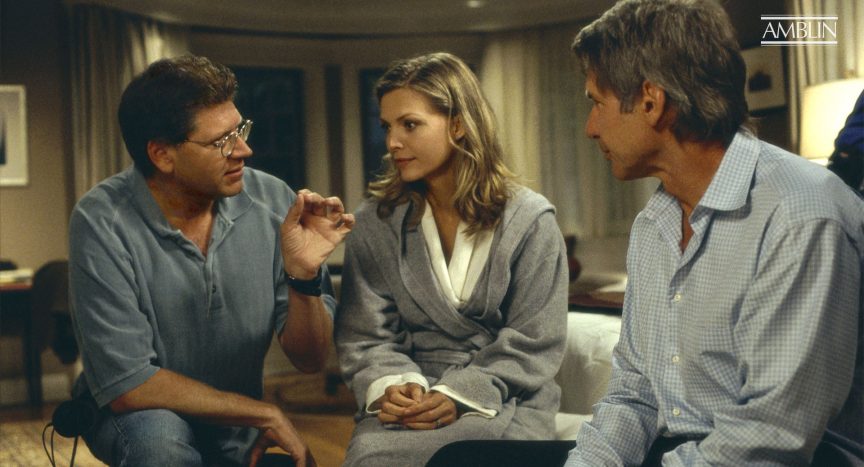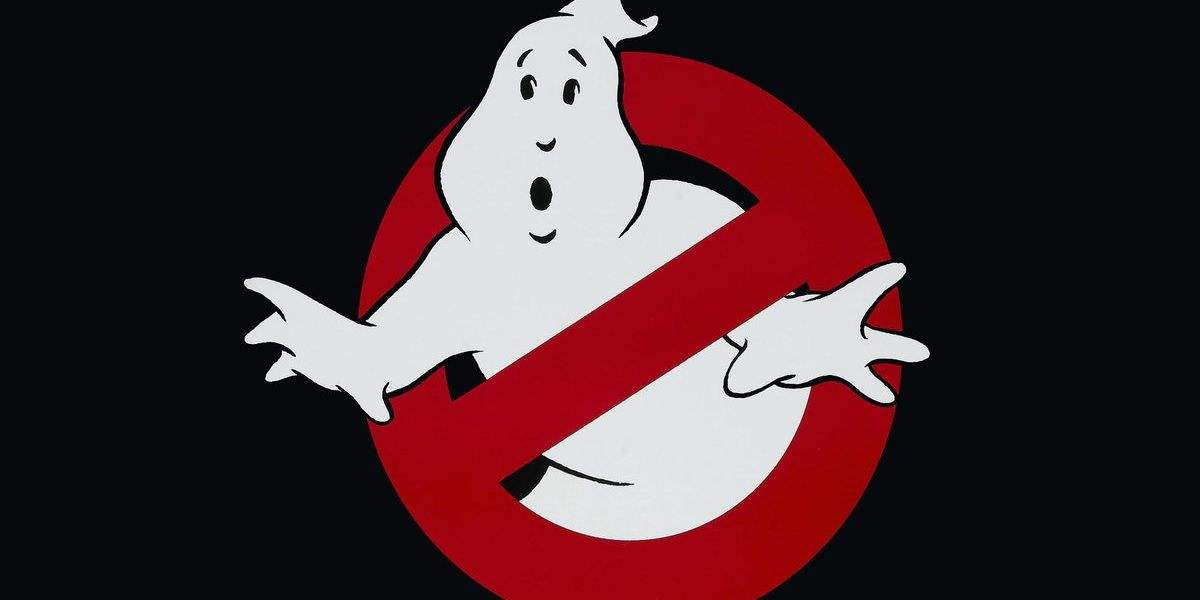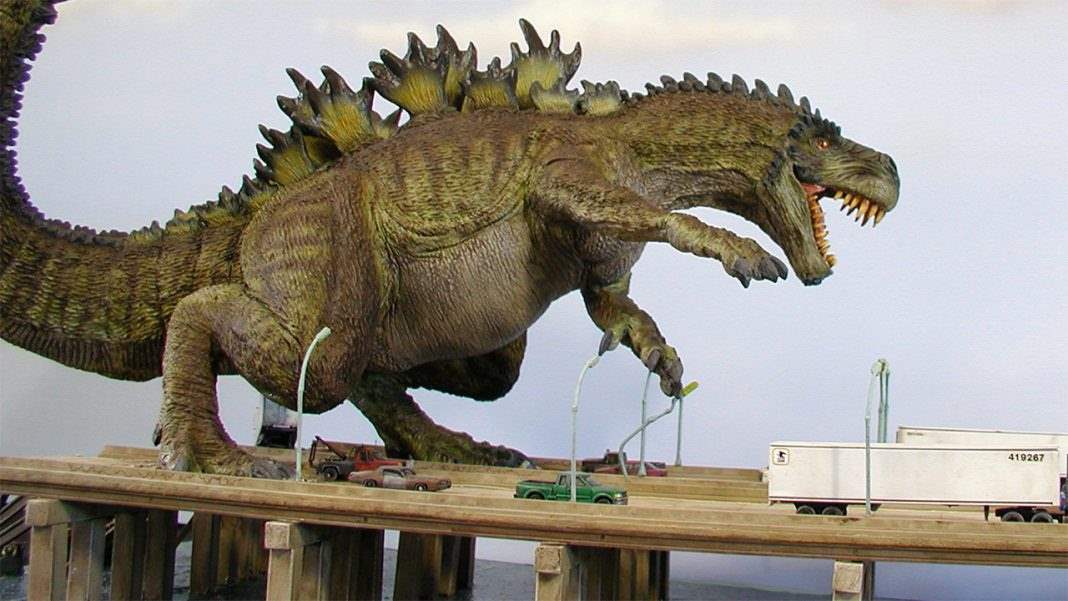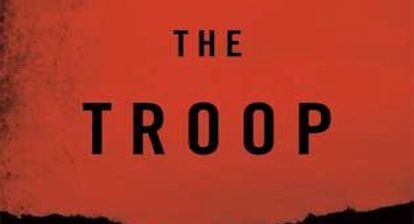You have to spend money to make money. In Hollywood, this has been the requirement for the most financially successful movies of all time. The logic behind throwing a lot of money at a project is the confidence that a large project with a massive scale–even though it might be excessively expensive–will yield massive box office returns. The biggest movie stars make $20+ million per movie because the calculation is that if Ryan Gosling is in the movie, chances are it will be grossing huge numbers at the box office–far surpassing the price tag for said star–as well as surpassing the expensive production budget, making the movie profitable. Pretty simple. Even if the budget balloons uncontrollably–hey–we have Brad Pitt–we’ll be alright…
But the days of legitimate movie stars bringing in automatic box office returns have been rapidly dwindling, especially with the lack of new movie stars in recent years, to go with the previous generations of movie stars aging out of popularity. Not to mention a global pandemic, emergence of streaming services, etc. The playbook had to be adjusted… The Hollywood playbook then devolved into a gluttony of hyper-expensive comic book movies and/or popular IP reboots/remakes. Movies that are events. These are safer bets for the studios when it comes to investing the big bucks.
Did You Know? Wicked Horror TV Has Classic and Independent Horror Films Available to Stream for Free!
Horror movies though, for the most part, are the antithesis to this school of thought. Horror movies have been consistently proving that financial success can be achieved with smaller production budgets. It has always been quite simple. Blumhouse built an entire business model with this strategy: Make ’em cheap. Release ‘em wide. Print money. Rinse. Repeat: A strategy that has been used by many horror movie studios throughout time, going back to New Line Cinema in the 1980s, Roger Corman’s New World Pictures in the 1970s, and all the way back to Hammer Films pre-1970s. While most massive movie franchises and top box office earners rely heavily on massive production budgets, horror movies have always found a way to manufacture results with little to no money.
With all that said there was a glorious time when there were horror/genre movies that had production budgets well over $100 million. And it’s incredibly enjoyable to sit and watch a movie knowing that the studios involved spent copious amounts of money so we could watch Harrison Ford and Michelle Pfeiffer play grab-ass with a ghost or watch Hugh Jackman chase Dracula & Frankenstein around Transylvania or watch Arnold Schwarzenegger take on Satan.
Below are the six most expensive horror movies to date. Why were they so expensive? Was the money well spent? Or were they just grossly mismanaged disasters? Did they end up making their money back? Let’s find out.
Hollow Man (2000)
Budget – $95,000,000 (estimated)
Paul Verhoeven is one of the most under-appreciated movie directors. Verhoeven has such an unbelievable talent for making anything he directs entertaining. He is absolutely not a stranger to big budget productions and is the definition of a director who leaves it all out on the screen. With that said, Hollow Man was a miss for him as a director – critically at least. Hollow Man was not hated by audiences but it wasn’t necessarily well liked either. Which for the always polarizing Paul Verhoeven is a shocking result. In Verhoeven’s filmography, Hollow Man was made directly between two of his best, Starship Troopers and Black Book. Even with a great cast, there is something missing with Hollow Man. It’s a little… hollow. Sorry.
Hollow Man follows a group of scientists who are working on a secret project for the Pentagon. The project is to find a way to make a living creature invisible. Presumably for military purposes. Kevin Bacon plays Sebastian, the head scientist of the group. Elisabeth Shue and Josh Brolin are the second in command as Linda and Matt. The rest of the group is really non-essential. When the Pentagon threatens to shut down the project due to results being insufficient and deadlines not being met, instead of providing them with positive updates on what he has solved so far, Sebastian opts to keep the Pentagon in the dark, giving himself more time so that he can use himself as a test subject…
Hollow Man had a bizarre and nonsensical story that was simple and silly, with an abrupt and stupid ending. The special effects were mesmerizing but it’s hard to believe that $100 million real dollar bills were spent on the making of this movie. It’s even harder to believe that $191 million box office dollars were spent watching this movie.
Kevin Bacon is a fantastic actor – but I thought he was horribly miscast in this film. His performance was conflicting and annoying. One second, he is a passionate and cocky, but generally a friendly genius and the next he is a deranged maniac. There was no consistency with his character or natural descent into madness, and I believe it really hurt the movie.
The invisible man and invisible animal scenes are visually striking. I do think it would have been hard for them to make this movie on the cheap. I’m sure there were ways to do it, but Verhoeven of course opted for the most expensive technology to make it work. In my opinion, Verhoeven and the filmmaking team should have opted to take the material less seriously. Not that Hollow Man is a super serious movie but it seemed stuck in between being a serious thriller and fun horror movie. I think there was more opportunity to lean into B-horror movie territory. B-horror movies are fun and cheap and revered by horror audiences. I think opting for this route might have benefited this movie and everyone involved enormously. This had so much cult classic potential and it still does have some cult juice but not as much as it should.
Hollow Man was a rare miss for everyone involved. But the movie made back its budget and then some – therefore, Hollow Man is technically, somehow a success…
Worldwide Box Office – $191,200,000

End of Days (1999)
Budget – $100,000,000 (estimated)
End of Days. Arnold’s attempt at horror. Of course, Arnold Schwarzenegger’s first attempt at an action/horror movie is a movie where he takes on Satan himself. Out of any actor, who would you trust most in a matchup against Satan? My first and only choice would be Big Arnie, especially when his character’s name is Jericho Cane. End of Days is an exceedingly stupid idea for a movie. Satan comes to New York City in search of a bride and you guessed it, Arnold plays an alcoholic cop who is out to stop him. Simple. So why did this movie cost so much money to make? There’s actually an answer to that. Arnold Schwarzenegger. And the studio was totally justified in doing so. Here’s why.
Arnold Schwarzenegger is an absolute box office juggernaut. At that point in 1999, he was on a run of ten straight movies where he had top billing or at least shared top billing, all of which grossed $100+ million at the box office. In other words, he was bulletproof. Arnold is also well known to be a workhorse. Being a diva was never really an issue for him. Just provide some arm butter and dumbbells and don’t even worry about a dialect coach. Arnold will show up ready to work. He was also infinitely likable amongst audiences and industry workers and maids and was exploring all different types of genres. Arnold was doing a ton of action movies (Eraser, Total Recall), all successful. He forayed into the comedy world (Twins, Junior), and found more success. He was a massive hit in movies where the target demographic was kids (Kindergarten Cop, Last Action Hero). He even starred in a holiday movie (Jingle all the Way). He did a comic book movie (Batman & Robin). But Arnold’s most beneficial career relationship has been with James Cameron. He had such a good working relationship with Cameron (Terminator 2, True Lies) Both of their careers are owed in large part to one another. No matter what project Arnold participated in during this run, that project had massive financial success.
Arnold had to take a break in ‘97 and ‘98 in order to deal with some health issues. His first project back from this hiatus was End of Days. That’s important because End of Days was the return of Arnold, in an action/horror movie, nonetheless. That makes the decision to pump $100 million into this movie quite easy to be honest.
End of Days was all gas, no brakes. There were quite a few big stars attached to this project throughout development as well. So, this project had real momentum at the time. Taking all of these factors into consideration – you would be foolish to say that this project was a bad/risky investment.
The movie itself was decent. It was a very dark film, literally and figuratively. Kevin Pollack was great as Bobby Chicago (what a name). But I’m sure nobody would argue that Arnold was a little bit miscast as an alcoholic NYC police officer. When you think unhealthy, pizza eating, heavy drinking, Bronx accent, NYC dirtbag cop, the name Arnold Schwarzenegger does not come to mind. Especially when you throw in the fact that Jericho Cane’s wife and daughter were murdered and Arnold has to also play a grief-stricken widower. Not exactly a wheelhouse role for him. But chasing down and killing Satan? Taking on cardinals, Vatican soldiers and satanists in combat? Now that is the wheelhouse for Arnold. With that said, Arnold is always great, even if he is sometimes miscast. End of Days being as financially costly, but also successful at that period in time wasn’t the least bit surprising…
Worldwide Box Office – $212,026,975

What Lies Beneath (2000)
Budget – $100,000,000 (estimated)
Even though the stars of What Lies Beneath (Harrison Ford and Michelle Pfeiffer) made $30 million between the two of them, there was no reason for this movie to be so expensive. There just wasn’t. This wasn’t World War Z, where there was globetrotting and zombies and action galore, or even Van Helsing where there was an endless amount of CGI and excessive action sequences where you could literally see money burning in the background. This was What Lies Beneath and What Lies Beneath was really a contained supernatural mystery movie. Like what happened here? Zemeckis, Ford, and Pfeiffer are definitely not cheap but for the movie to cost this much is dumb.
What Lies Beneath was written by Clark Gregg and Sarah Kernochan, based on Kernochan’s real experiences with the supernatural. The property was owned by Spielberg’s Amblin, DreamWorks, and 20th Century Fox. Robert Zemeckis was brought on to direct. The story involves a couple who live in a beautiful lake house in Vermont. Pfeiffer has a daughter from a previous marriage and the movie begins with her going to school, leaving the nest, and never returning, as the daughter is not seen in the movie again. The rest of the movie focuses solely on Ford and Pfeiffer, but specifically Pfeiffer. Unfortunately for a while there is a nauseating amount of affection being displayed between Ford and Pfeiffer. The kissing was too loud. The smacking of their lips almost blew my speakers. I hated the sound design in this picture.
As Pfeiffer starts to experience supernatural occurrences happening in the house, Ford continuously refuses to believe these claims and instead forces her to see a therapist. Turns out the supernatural occurrences were legitimate.
The rest of the movie plays out as a three-character film with some smaller roles in the mix, but mostly insignificant. There is minimal action and a few good scary scenes, but mostly just a solid supernatural mystery.
Does this sound like a project that should have cost over $100 million to make? The answer is an emphatic no. Go watch the movie and try to imagine where this money was spent because I can’t for the life of me figure it out. Based on what I saw on screen, the budget for this movie should have been a maximum $60 million. There was a lot of talking and not a lot of action. Ford and Pfeiffer totally carried this film and there was really nothing to it other than it being a good marriage drama with good performances and a nice, twisted mystery that paid off at the end.
Robert Zemeckis is no stranger to big budget projects, as most of his movies cost a lot to make. But I believe he could have made What Lies Beneath work with much less money. For how non-spectacular the movie was. It was totally not necessary to spend over $100 million on a standard genre movie. We’ve all seen hundreds of movies like this, and I assure you most of these, if not all of them, did not cost a hundred million dollars.
What Lies Beneath also exemplifies a conundrum that studios face. Is it more profitable for them to pay the movie stars with points, which is a percentage of the box office profits being paid to the star post-release? Or is it better to pay the stars a flat fee upfront? A lot of the world’s biggest stars prefer to be paid with back-end profit sharing and a still decent up-front fee. Obviously, getting Ford and Pfeiffer involved with this project cost the studio more up front than they probably would have preferred and they might have benefited by paying them percentages of the profits instead to keep the production costs down. But in the end, all they needed was those two stars attached with Zemeckis at the helm – and that gamble paid off, as What Lies Beneath was very profitable…
Worldwide Box Office – $288,263,989

The Wolfman (2010)
Budget – $150,000,000 (estimated)
This movie made $140 million dollars. First thing you would think is ‘wow, what an enormous success’. Well, the budget was $150 million. So even though that’s a lot of tickets were being punched, there were a lot of job postings being listed at Universal Studios as well. My guess is a few of those involved with production of The Wolfman were selling insurance in Phoenix by the Monday after opening weekend.
The history of werewolves in movies is vast and diverse. There have been all different kinds of werewolf movies that have succeeded at the box office. There have been teen comedies like Teen Wolf. Low budget horror/comedies like The Howling. Savage action movies like Dog Soldiers. Werewolves have also been subsidiary characters in massive franchises like Harry Potter and Twilight. But most notably to die-hard fans of the lycanthropes, The Wolf Man from the Universal monster universe back in the 1930s and 1940s. It came as no surprise that Universal wanted to take this property and relaunch it as a potential modern horror franchise. All of the pieces were in place. Andrew Kevin Walker, who is a fantastic writer, was brought on board to write the script. Benicio del Toro was attached from the get-go because he is a super-fan of The Wolf Man, even being a collector of Wolf Man memorabilia. Rick Baker, a VFX master, was a massive fan of the original Wolf Man as well and was brought on board to do the makeup effects. So why didn’t The Wolfman hit as much as it should have with audiences and critics?
The Wolfman wasn’t exactly reviled by either the audience or critics. It was seen as just an average movie. The problem for Universal was that they invested a massive amount of money into this project and ‘just average’ is beyond a failure for them. There were so many issues with this film that were self-inflicted fuckups. One being the mismanagement of who was right to helm the project. Mark Romanek was originally the guy brought on to direct but after he left due to creative differences, Universal had to scramble and bring in Joe Johnston (who is a great visual talent). But he would be doomed to fail with the resources provided and wasn’t involved at all from the ground up. Johnston later admitted that he took on the project because he had cash flow issues and needed the money.
Johnston was essentially a steward for hire to come in and get a movie in the can. Universal has continuously had issues with the ‘Monster Universe’ because every production seems to have major creative differences involving finances and tone of the movie. Instead of just allowing the filmmakers to do their job, Universal seems to meddle with the process to the point where each production turns into a disorganized mess with the result being a disorganized finished product. The finished product of The Wolfman was a disappointing and chaotic mess. You can see the rudder-lessness of the project up on screen. And that, as they say, was that. It’s quite amazing that Universal spent $150+ million on this project; just to nickel and dime all the way through production when the movie needed constant adjustments.
The release of The Wolfman was delayed multiple times – leading to the release date landing on Valentine’s Day weekend… against the movie Valentine’s Day… Can’t say that was a wise decision by Universal…
Worldwide Box Office – $142,634,358

Van Helsing (2004)
Budget – $170,000,000 (estimated)
Van Helsing was hilariously expensive, especially when considering how mediocre the finished product was. Written, directed and produced by Stephen Sommers; and starring Hugh Jackman as the titular Van Helsing; and Kate Beckinsale as Anna Valerious, Van Helsing was Universal Studios’ attempt at a ‘monster universe’ franchise.
Five years before the release of Van Helsing – Stephen Sommers had written and directed the Brendan Fraser iteration of The Mummy, which was a massive critical and box office success. The Mummy and The Mummy Returns were enormous success stories for Universal Studios and directly led to them giving the keys to Sommers to write and direct Van Helsing,
So why did Van Helsing cost so much money? Simple – action scenes that had so much CGI that it made the audiences heads explode, and not in a good way. There’s CGI action that is groundbreaking and done right, like in Terminator 2: Judgment Day and The Matrix and most definitely Avatar. Those movies used CGI to give the audience something they have never seen before. And then there’s Van Helsing, where the CGI action was annoying and confusing.
Van Helsing, the character, is a globetrotting monster killer. Which sounds so cool. But they don’t make it fun in the movie, they treat it as a burden that he has to carry. In this world, a secret Vatican society employs Van Helsing to go around and eradicate all of the monsters in the world. They provide him with James Bond-like technology and as an immortal man, Van Helsing goes around killing monsters. The plot of this movie is beyond confusing though. The quickest and best explanation that I can give is that Dracula wants to use Dr. Frankenstein and the Frankenstein monster to assist him in birthing a bunch of Dracula babies so that Drac can presumably take over the world? I got confused halfway through typing it all out.
I really do believe a smaller scale story of Van Helsing would work incredibly well. There is so much to work with in the Universal Studios monster universe. But $170 million dollars of nonsensical CGI and convoluted storytelling wasn’t it. Even with the bloated budget, critical bludgeoning and general dislike of this movie from the public, it still went on to make over $300 million at the box office. Why is this the case? In my opinion, coming off the success of The Mummy movies, as well as including so many famous monsters that spark intrigue and of course Hugh Jackman, who at the time was on the verge of bursting through as a real superstar actor. Van Helsing had a lot going for it, seemingly everything except for the most important thing, a good, finished product…
Worldwide Box Office – $300,150,546

World War Z (2013)
Budget – $190,000,000 (estimated)
World War Z was Brad Pitt’s big swing at an action/horror franchise but what he ended up with instead was a massive headache. World War Z was a troubled and seemingly doomed production all the way through. Based on the bestselling novel by Max Brooks, who is the son of Mel Brooks, World War Z: An Oral History of the Zombie War was a hot property even before the book was officially released. There was a bidding war between Brad Pitt’s company Plan B and Leonardo DiCaprio’s company Appian Way for rights to the property. Pitt won the bidding war with an estimated $1 million dollar bid. After the initial screenplay was well received, Marc Forster was hired to direct. Unfortunately, production went about as poorly as it possibly could. Because of the material, which is a sprawling global epic where the main character Gerry (played by Brad Pitt) goes from the United States to South Korea to Jerusalem to Wales to Nova Scotia all in a less than 2-hour runtime and has to escape from hordes of zombies along the way.
The issue was the director, Marc Forster, seemed to be way out of his depth and clearly could not make it work. Because of this, the shooting cost was ballooning up to the $220+ million-dollar range. I believe that the Forster hiring was a massive mistake by Pitt. Luckily that decision did not totally submarine the movie. But with a more capable director who has experience with the scale of this movie, I think World War Z would have benefited greatly. The lack of exciting action in Forster’s filmography should have been much more of a red flag.
After production was complete, all Pitt had in the can was a 72-minute mess of an incomplete movie. Apparently, there was a climactic battle scene that was wholly expensive to shoot (undisclosed amount) but had to be tossed out, essentially being a massive waste of time and money. After extensive rewrites by Drew Goddard and Damon Lindelof, as well as many reshoots, there was much more of a cohesive movie in the can. The finished product being what it is today. I found the most effective part of the movie to be the final standoff with Pitt’s character and the few zombies in the WHO facility. Pitt injects himself with a (deathly) cure that allows him to avoid detection by the zombies, a great revelation late in the movie. Pitt proceeds to take a chance, walk right past them, as the score picks up and Pitt crushes the scene as he always does. The entirety of the reshoots cost roughly $20 million and this scene in particular could not have been that expensive to shoot at all. It also played into Forster’s strengths much more, as he was still involved with reshoots at this point. Some would say that Lindelof and Goddard saved the project, as they steered the movie away from the “Rambo vs The Zombies” route that many sources said seemed to be the original direction of the movie. They instead pivoted towards a more subdued, character-driven thriller.
This movie turned out to be an odd paradox, what made the novel so great was its massive scale and all of the global politics involved that were weaved so effectively into a zombie book. But what made the movie so great was its smaller scale thrilling horror sequences where Gerry had to evade and outsmart the zombies. Obviously, there were plenty of thrilling big scale scenes, particularly the zombies climbing their way over that huge wall, as well as the plane crashing sequence (where Gerry somehow survived a plane crash). Overall, the finished product was solid and proceeded to gross roughly $550 million dollars worldwide. Not only that, it was actually received positively by critics and audiences as well. World War Z is one of the oddest disasters turned success stories in the history of Hollywood. For a while there was a sequel in the works and Brad Pitt had enlisted David Fincher to come on board and direct. But that project seems to be on the shelf for now…
Worldwide Box Office – $531,861,650

Other than The Wolfman, not one of these movies was a true box office failure. I think that speaks volumes to the popularity of the horror genre in movie theaters. Could these movies have been made with a little more of a focus on cost efficiency? Of course. Did it matter in the end? Not really…
Box office and budget data pulled from The Numbers.







